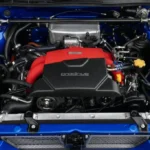
Why is Puffin Crossing a Game-Changer for Pedestrians and Cyclists?
- Ventscripe Staff
- July 31, 2025
- Lifestyle
- puffin crossing
- 0 Comments
The city’s streets can be a difficult task for cyclists and pedestrians alike. With the constant whirlwind of moving traffic, finding secure crossing points is crucial. The puffin crossing is an innovative design that focuses on safety and comfort for those walking or riding on two wheels. The innovative pedestrian crossing provides more than just a spot to stand; it alters the way we think about urban mobility. As cities develop and grow, so must our infrastructure. The puffin crossing is at the center of this evolution. Let’s look at the reasons why this clever solution is an important step forward in accessibility and safety!
What is the difference between Puffin Crossings and traditional pedestrian crossings?
Puffin crossings are a refreshing way to ensure pedestrian security. In contrast to traditional crossings that usually rely on simple signs, the puffin crossings are equipped with the latest technology. They make use of sensors to determine the presence of people waiting to traverse.
This means that the green light for pedestrians may be extended as needed. It adjusts in real-time in response to demand, instead of fixed timing schedules.
Furthermore, the puffin design puts push buttons at a height that is accessible and close to the street. This facilitates a more efficient navigation for the users, which makes it more convenient for everyone, particularly those who have mobility issues or are visually impaired.
The overall design ensures that pedestrians can be seen by motorists for longer while they travel across, which increases security beyond what standard pedestrian crossing methods provide.
Benefits of Puffin Crossing for Pedestrians and Cyclists
Puffin crossings provide numerous benefits for cyclists and pedestrians alike. One of the main benefits is improved visibility. The crossings are constructed using the latest technology that allows signals to change based on traffic flows and pedestrian activity.
For pedestrians, the puffin crossings make crossing more intuitive. They wait until they are safe to cross and ensure that vehicles stop promptly. This improves the trust of people, particularly older people and children.
Cyclists also benefit from the puffin design. The designated cycle lane can help keep them away from motor traffic, thus reducing risks during peak traffic at times.
In addition, these crossings cut down the waiting time significantly. Once people push the button to cross the road, the lights immediately change without delay. This makes it easier for many people to cycle or walk instead of driving.
Puffin crossings help create a safer setting that encourages active transportation methods in urban regions.
Safety Features of Puffin Crossing
Puffin crossings are equipped with a variety of security features that greatly enhance the safety experience for pedestrians and cyclists. One of the most notable features is the sensors. These sensors detect when pedestrians wait to cross the road and ensure that traffic lights respond promptly.
This latest technology allows vehicles to be kept at bay while pedestrians make their way through the crossing in a safe manner. The pedestrian signal stays visible until all have crossed, which eliminates any confusion or confusion.
Furthermore, Puffin crossings are designed with textured pavers. This helps visually impaired pedestrians by giving visual clues about their surroundings. Cycling enthusiasts also benefit because the layout allows for safer and more efficient transitions.
Bright lighting and LED signs can enhance visibility in low-light conditions. They warn drivers before they arrive, and encourage an easier and safer journey to these busy intersections, without sacrificing effectiveness for other motorists.
Implementation and Success Stories of Puffin Crossing
Cities all over the world have begun to embrace puffin crossings and have seen remarkable results. In London, for instance, these new crossings have transformed the streets into safer ones for cyclists as well as pedestrians.
One noteworthy project took place in Camden. There, a set of crossings for puffins was constructed close to parks and schools. The results were impressive; pedestrian accidents decreased by more than 30% in the initial year.
In Australia, cities such as Brisbane are also adopting this strategy. Local reports suggest that the number of cyclists increased by about 20 percent. This shows how well crossings can accommodate both pedestrians and cyclists.
The feedback from residents has been mostly positive. Many are pleased with not only the increased safety, but also the convenience of using busy roads in which traditional signals are often short. Participation from the community played an important part in driving this transformation ahead as the public pushed for a better infrastructure that was tailored to their specific needs.
Comparison with Other Crossings
When comparing the puffin crossing in comparison to other crossings, a few important differences are evident. Traditional crossings usually depend on simple traffic lines and lights. Although they are functional, they could create confusion for pedestrians and drivers.
Puffin crossings, on the other hand, are equipped with advanced sensors to detect the presence of pedestrians. The technology cuts down wait times by a significant amount as compared to the standard crosswalk, in which everyone has to wait for the signal to change.
Another option could be the Pelican Crossing, which uses traffic signals but is not equipped with certain of the sophisticated features that puffins have. Pelicans require the push button but do not provide real-time information about whether it’s safe to traverse.
Zebra crossings are another option that is well-known for their ease of use and visibility. They do not have control over the stopping of vehicles. Drivers could not always yield in the manner they intended to.
Puffin crossings combine safety and efficiency, focusing on those who are on wheels or walking, while minimizing disruptions to the flow of traffic.
Conclusion
The introduction of the puffin crossings marks a major improvement in cyclist and pedestrian safety. These unique crossings have changed urban landscapes and made them more accessible and comfortable for users. With their distinctive layout and features designed specifically to modern traffic requirements, they provide an innovative alternative to the traditional pedestrian crossings.
Through enhancing interaction between cyclists, pedestrians and cars, Puffin crossings are designed to ensure security while improving the flow of foot and vehicle traffic. Their advantages are evident in reducing waiting time for pedestrians, increasing the visibility of crossing points, and building confidence among those traversing busy streets.
While cities are continuing to develop and focus is placed on sustainable modes of transport like walking or cycling, the inclusion of puffin crossings into the mix becomes crucial. They’re a positive move towards making safer areas that encourage active lifestyles.
Reviewing the stories of various places where puffin crossings have been installed, you can see promising outcomes. A majority of communities report fewer accidents that involve pedestrians than areas that do not have these innovative designs. This is an indication of the potential benefits of these designs when they are integrated well into urban design.
When you compare different kinds of pedestrian crossings, such as the zebra or pelican crossings, it is evident that puffin crossings stand apart because of their unique function designed specifically for modern roads. They can connect the gap between car movement and pedestrian safety.
Adopting this progressive approach can lead us toward safer streets for everyone involved–pedestrians seeking safe passageways and cyclists riding freely without fear of collision risks all benefit from what is becoming an integral part of our road systems worldwide–a true game-changer indeed.
More to Read: Prodrive performance pack




